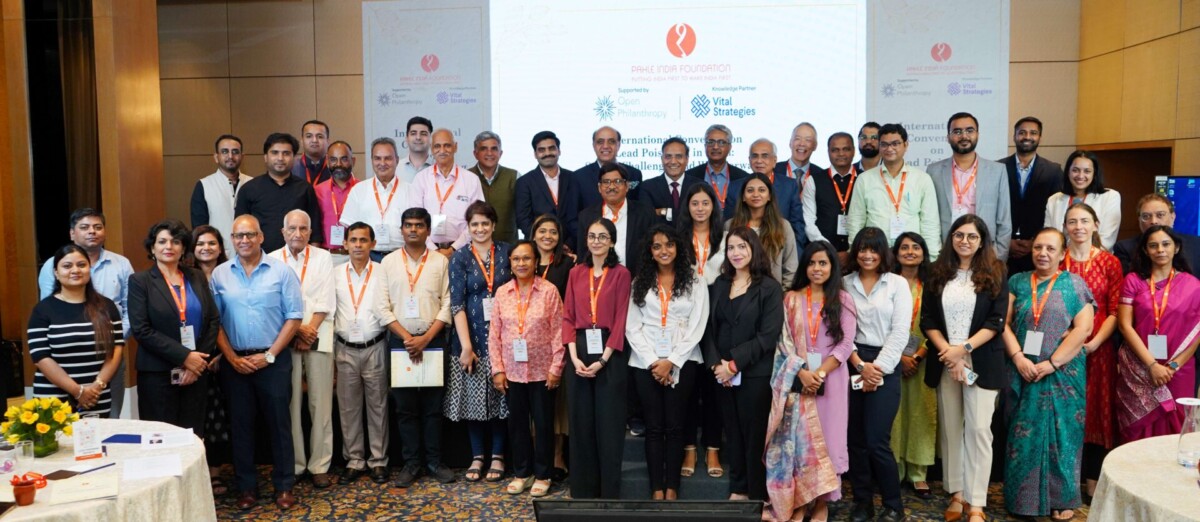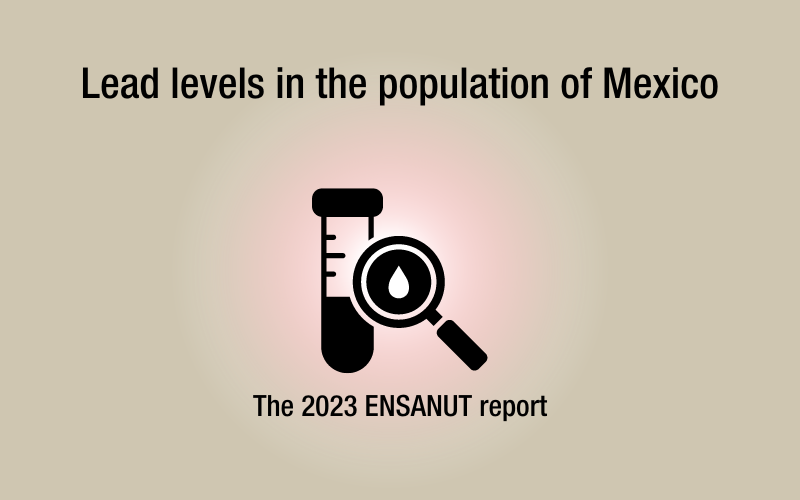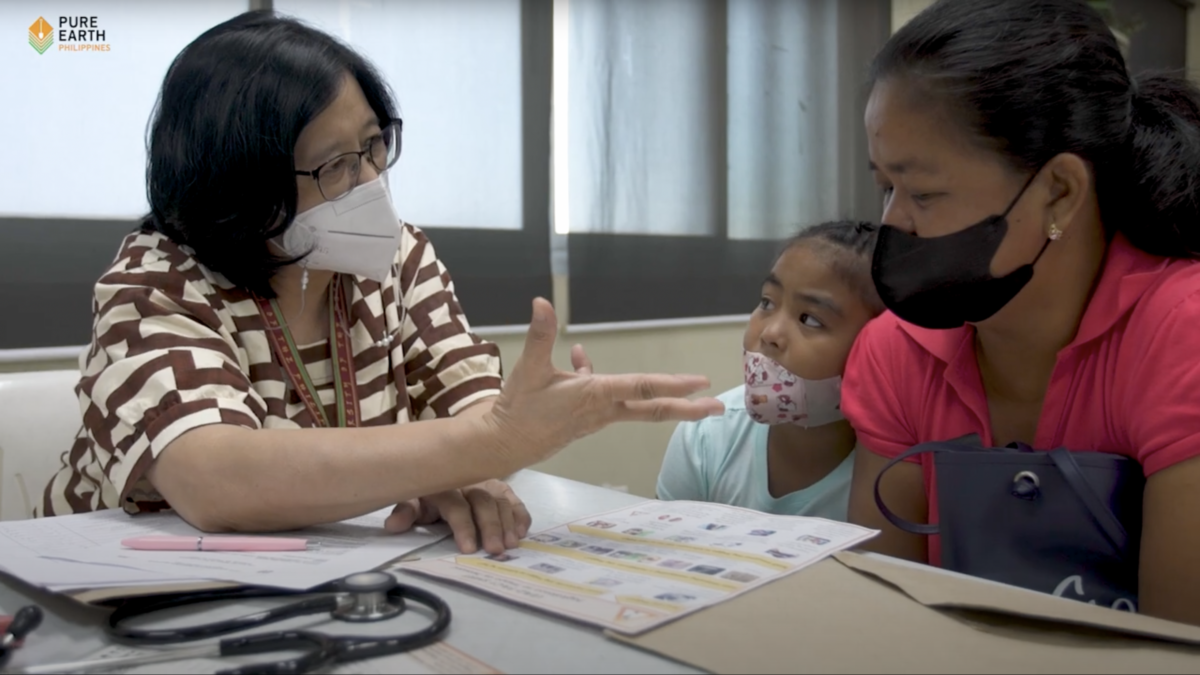Note from the author: This blog summarises my PhD research at the University of Manchester which investigates the environmental impacts of off-grid solar technologies in sub-Saharan Africa, focusing on Malawi as a case study and collecting novel data describing toxic waste disposal practices.
The private off-grid solar market: a sustainable development strategy
In sub-Saharan Africa (SSA), 600 million people still don’t have access to electricity, approximately 53% of the population [1]. Increasing electricity access is considered essential for sustainable development, to break the cycle of poverty, improve public health, reduce the dependency on natural resources and build resilience to the impacts of climate change [2].
However, efforts to increase electricity access in SSA are obstructed by the unreliability of the existing electricity infrastructure and the high costs of extending electricity grids to reach rural populations [3]. To address these challenges, off-grid electrification solutions have become increasingly popular: using solar panels and batteries to locally generate and store electricity. Off-grid solar technologies fall into three general categories based on their size: i) small pico-solar products which only provide very low levels of services (e.g. solar-powered torches), ii) solar home systems which provide basic electricity services for an individual household (Figure 1), and iii) larger community scale mini-grids – which are currently hindered by an uncertain commercial and regulatory landscape. With the limitations of pico-solar products and mini-grids, off-grid solar electrification efforts in SSA currently focus on accelerating the deployment of solar home systems, delivered through the private off-grid solar market.

Since becoming established in 2010, the private market for off-grid solar technologies has grown rapidly, receiving substantial investment from global energy companies. With the success of the private solar market, promoting the sale of household scale off-grid solar technologies has been adopted as a core electrification strategy by governments across sub-Saharan Africa. For example, the Malawi Government aims for half of its population to own off-grid solar technologies by 2030 (approximately 11.2 million people, 2.5 million households) and are promoting the growth of its domestic solar market through the removal of VAT and import duties for solar products [4]. As a result, off-grid solar technologies are expected to provide electricity to hundreds of millions of people across SSA by 2030 [5].
The private off-grid solar market is represented by an industry body, the Global Off-Grid Lighting Association (GOGLA), which is responsible for monitoring sales and regulating product quality. However, the majority (72%) of the off-grid solar market is estimated to be occupied by unregulated and often unbranded suppliers which are not associated with the industry body [6]. This unregulated market has become integrated into local informal economies in SSA and is praised for making solar technologies more affordable and accessible, however, it raises concerns regarding product quality [7].
High volumes of lead-acid battery waste (ULABs) from off-grid solar
Because SSA’s off-grid solar market caters to communities without electricity access, which characteristically have low levels of income, off-grid solar technologies typically rely on the most affordable technologies. Specifically, lead-acid batteries (often the most expensive component) are typically used in solar home systems as they can be a third of the price of higher performance lithium-ion batteries [4]. Furthermore, as energy poor households are left to purchase, design and install their own electricity infrastructure, solar home systems are often installed with a lack of technical expertise. Whilst solar panels are relatively robust and can continue to generate electricity for more than 25 years, lead-acid batteries are highly vulnerable to rapid deterioration if their level of charge is not kept within a specific voltage range – requiring a high level of technical understanding.
Lead-acid batteries in solar home systems in Malawi were found to be regularly overstrained, causing batteries to often fail within one year, far shorter than the expected 3–5-year lifetime. This short lifetime results in a substantial volume of lead-acid battery waste and also compromises the carbon footprint of off-grid solar systems (requiring more energy intensive batteries to be manufactured) [8]. This volume of lead-acid battery waste is very concerning because there is a general lack of physical and legislative infrastructure to safely manage electronic waste across SSA and because 60-70% of the weight of ULABs is occupied by lead – a potent neurotoxin [7]. Meanwhile, household waste in Malawi is commonly dumped in nature, buried in pits, or burned.
Informal recycling of used lead-acid batteries (ULABs)
Lead is a valuable material with a global value of approximately $2/kg in August 2024 [9], and a small (40 amp hours) ULAB typically contains more than 8 kg of lead. So ULABs have a very high scrap value, particularly considering that 70% of Malawi’s population is estimated to live below the international poverty line of $2.15 USD/day [10].
In the absence of formal waste management infrastructure, informal scrap markets capitalise on the value of ULABs by recovering lead from ULABs to sell to international buyers. In Malawi, informal battery repair shops were also found to be very common within off-grid communities (Figure 2) ([4]. These battery repair shops use rudimentary techniques and locally available tools to repair and remanufacture batteries from ULAB scrap, and also sell remanufactured batteries to local solar users at a fraction of the price of new batteries. These battery repair shops provide a highly valued local service, compensating for the short lifetime of lead-acid batteries in off-grid solar energy systems, however, unwittingly release dangerous quantities of lead pollution into the surrounding community.
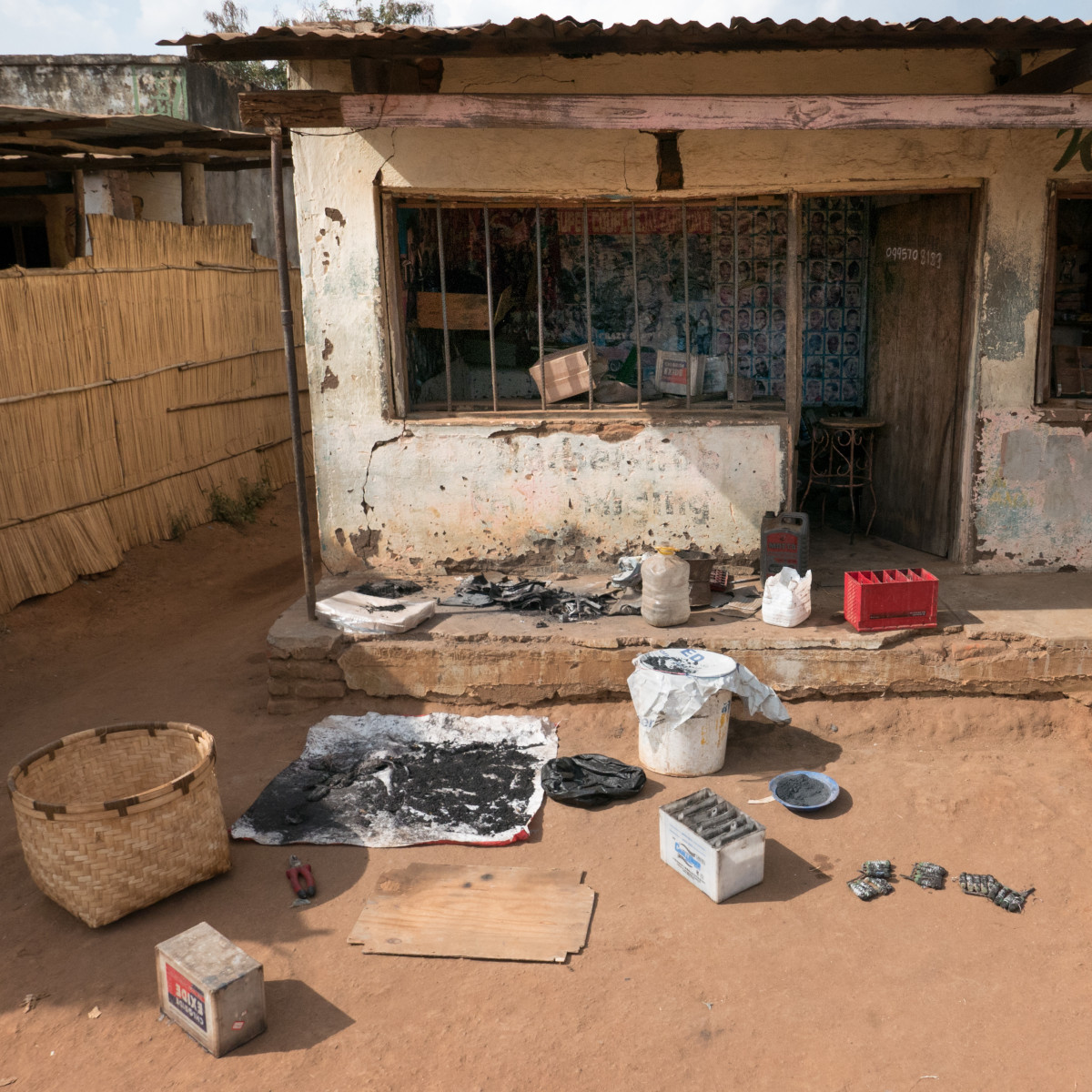
In the battery refurbishing process, ULABs are cut open with an axe, machete or saw, and battery acid (sulphuric acid) is commonly drained directly onto soil. The degraded lead battery cells are then removed from the plastic battery casing and are processed to fabricate new improvised battery cells. This fabrication process involves melting lead and crushing degraded lead battery cells into dust openly on busy market streets.
The flow of materials through the ULAB refurbishing process was recorded in two different suburban off-grid communities surrounding Malawi’s capital, Lilongwe [8]. Significant quantities of lead are lost to the environment during every step in the ULAB refurbishing process;
- draining battery acid containing dissolved lead,
- handling brittle degraded lead battery cells,
- crushing degraded cells into dust, and
- openly melting lead without emissions controls.
Approximately half of the lead content of a battery was released into the surrounding environment: between 3.5-4.5 kg of lead pollution was recorded to be lost from a small (40 amp hours) battery. This lead was released as dust and shrapnel, either accidentally spilt to the soil or purposefully swept away and discarded. Meanwhile, degraded lead plates and lead dust were commonly left to openly dry on the streets, exposed to windy conditions, heavy foot traffic and passing livestock.
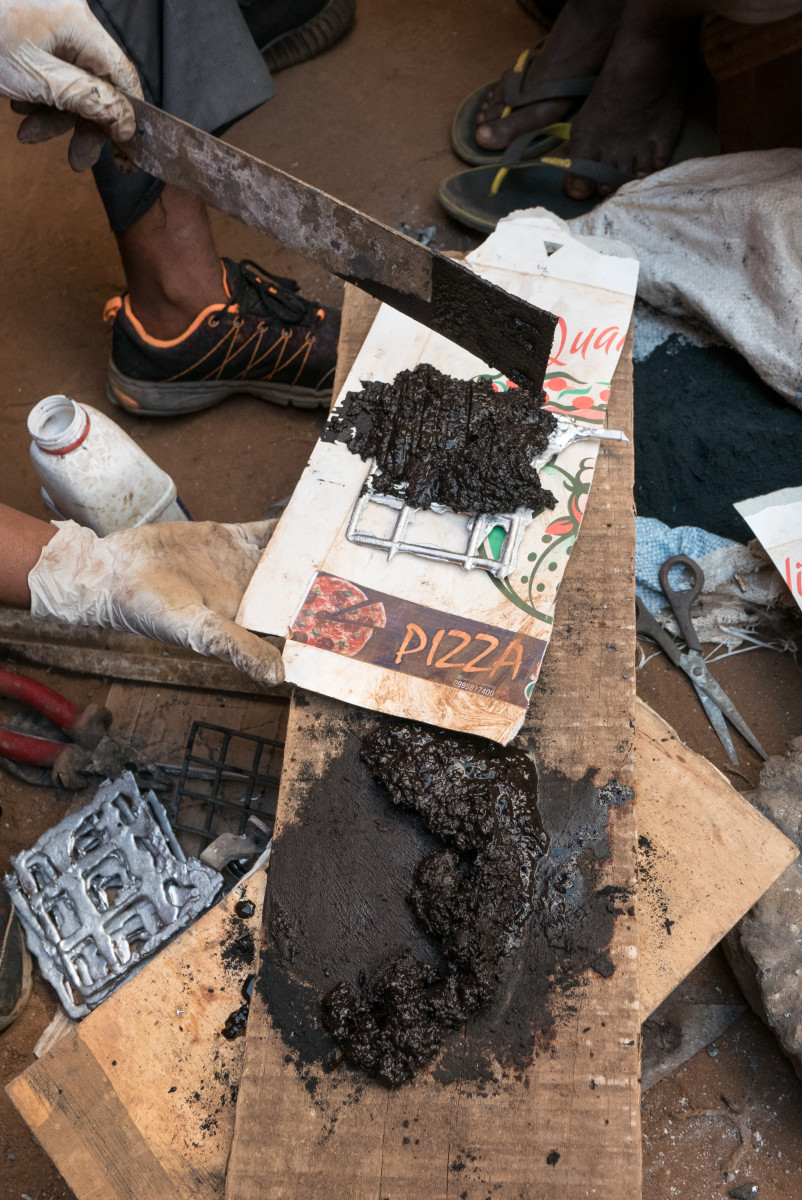
Most of the informal ULAB technicians interviewed in Malawi were self-taught and learned through experimentation after observing other local technicians refurbishing batteries with readily available tools – showing ULAB refurbishing to be a highly accessible trade. Meanwhile, the method of the refurbishing process varied depending on each technician’s resources and level of expertise.
Informal ULAB refurbishing versus recycling
Notably, off-grid solar only contributes a relatively small fraction of the ULAB waste volume in low- and middle-income countries. The informal ULAB recycling industry has traditionally focused on automotive batteries, which occupy the majority of the ULAB waste flow. However, the recent rapid growth of the off-grid solar market has resulted in the generation of significant volumes of lead-acid batteries within off-grid communities.
The informal ULAB refurbishing practices recorded in this research are different to more traditional larger-scale informal lead smelters which melt ULABs into lead ingots to sell, and the pollution profiles and human lead exposure routes are also slightly different. Larger-scale informal lead smelters are expected to be more efficient and release less lead pollution per ULAB, but recycle a higher volume of batteries and are expected to release a significantly greater total volume of lead pollution. However, these industrial sites are typically further removed from residential communities.
Whereas, with the introduction and growth of off-grid solar, multiple small battery refurbishing shops are now often found within individual suburban communities. Solar ULABs are openly refurbished on busy market streets, often within 100 metres of food markets, community water wells and nursery schools. So, these ULAB refurbishing sites may more directly expose local populations to lead pollution.
Health risks
The World Health Organisation recognises that there is no safe level of lead exposure [11]; the lead pollution released from ULAB refurbishing poses severe health risks to the surrounding communities. Lead dust released onto market streets may be kicked up and recirculated by foot traffic. This lead dust and air pollution can be directly breathed in, deposited onto food at open markets, or carried into homes. Meanwhile, young children typically have greater exposure to environmental lead pollution due to hand-to-mouth practices and playing in contaminated areas. Environmental lead pollution can also bioaccumulate in crops through contaminated soil and water [12].
The 3.5-4.5 kg of lead pollution released from a single ULAB represents more than 100 times the lethal oral doses of lead for an adult (450 mg per kg bodyweight) [13]. Whilst the absorption of very small quantities of lead in children’s blood (5 μg/dL) is known to impact brain development and reduce IQ [11]. However, it’s currently unclear how much of the lead pollution released from informal ULAB refurbishing is ingested by local populations. With the alarming quantities of lead pollution recorded, further research is urgently needed to investigate the health impacts of ULAB refurbishing and off-grid solar waste. The few prior studies which have investigated the health impacts of informal recycling practices have confirmed elevated neurological defects and even child fatalities from lead poisoning in the surrounding communities [14], [15], [16], [17].
Therefore, lead-acid battery waste from off-grid solar technologies currently poses severe health risks which threaten to be amplified by the ambitious targets to provide electricity access to hundreds of millions of people with off-grid solar. Phasing out lead-acid batteries for lithium-ion is currently too expensive and unfeasible to enforce in the predominantly unregulated off-grid solar market. Hence, safe lead-acid battery waste management infrastructure is essential to decouple off-grid solar electrification initiatives from substantial quantities of lead pollution.
Circular Economy Solutions
With the high toxicity of lead, ULAB recycling should only be performed in safe, formal and well-regulated battery recycling facilities with effective emissions controls. Fortunately, formal lead-acid battery recycling is a profitable industry that offers compounding benefits through mitigating the health and economic costs of lead poisoning. Whilst formal ULAB recycling has long been established in the Global North, only a few safe ULAB recycling plants exist in SSA, far outweighed by the ULAB waste flow. Accelerating the shift away from the incumbent toxic recycling industry requires a holistic approach with economic, legislative, and social interventions:
1. Encourage investment in safe recycling plants
Governments in SSA can use economic policies to encourage investment from safe ULAB recycling companies. For example, by offering tax breaks and subsidies that support the development and scaling up of recycling infrastructure.
2. Waste collection (reverse logistics)
Collaborating with the established network of independent scrap collectors and traders is essential to collect high volumes of ULABs and divert the waste flow away from incumbent toxic practices. Specifically, offering scrap dealers a higher price for ULABs than they receive from informal recyclers is an effective tool to divert the ULAB waste flow to centralised collection points and safe recycling plants. Such waste collection invectives can be financed through waste management financing mechanisms.
3. Waste management financing mechanisms and legislation
The companies that import lead-acid batteries into countries in SSA should be mandated to finance the collection and waste management of the resulting ULAB waste flow: a principle labelled as Extended Producer Responsibility (EPR) which is considered the best practice for electronic waste management, enforced in Europe, North America and China [18]. Legislative advances should also focus on regulating the export and import of toxic lead scrap should be regulated at borders to restrict the informal recycling trade. In tandem, lead pollution regulations should be imposed on informal lead smelters – with smelters near residential communities considered a high priority.
4. Plan for end-of-life
The management of end-of-life waste should be considered in the planning of off-grid solar initiatives. For example, aid and development assistance funding should only be awarded to off-grid solar projects which include plans and budgets for waste collection and safe recycling.
5. Public awareness
Communities should be made aware of the hazards associated with ULABs so that they can begin to take measures to reduce their exposure to or ingestion of environmental lead pollution. For example, encouraging the washing of food and hands before meal preparation and eating can have significantly positive impacts on mitigating lead poisoning in contaminated areas [19]. Furthermore, increasing awareness of the public health benefits may encourage communities to participate in ULAB waste collection initiatives.
Key research gaps
The rapidly growing volume of ULABs from off-grid solar presents substantial public health risks, however, the informal recycling industry in low- and middle-income countries is still poorly understood. Further research is urgently needed to uncover the impacts of informal ULAB recycling and to develop solutions.
Before this PhD research, informal ULAB recycling practices had not previously been reported in Malawi. Yet, informal ULAB refurbishing shops were found to be present in all the off-grid communities visited surrounding the capital city of Lilongwe, in commercial districts, and also within the city centre. A suspected large-scale informal lead smelter was also found in a suburban commercial district (fenced off but showing advertisements for smelting services). Hence, the landscape of the informal recycling industry is still poorly understood. Specifically, it is not clear how many informal ULAB recycling sites exist, how much lead pollution is released, how many people are exposed to lead pollution, and how big the resulting health burden is.
However, with the general lack of safe recycling infrastructure, the substantial volume of lead-acid battery waste, and the potent toxicity of lead, the resulting public health impacts are expected to be severe – posing a significant economic burden and a hindrance to sustainable development.
____________________________
Note:
This research was conducted at the Tyndall Centre for Climate Change Research at the University of Manchester (2020-2024), supervised by Dr. Alejandro Gallego-Schmid, Dr. Frank Podd, and Dr. Fernando Antonanzas-Torres. The publications from this PhD are publicly available:
Solar home systems in Malawi: Commercialisation, use and informal waste management
Life cycle assessment of solar home system informal waste management practices in Malawi
References:
[1] IEA, “Africa Energy Outlook 2022,” 2022.
[2] UN General Assembly, “Transforming our world: the 2030 Agenda for Sustainable Development.” Accessed: Aug. 20, 2024. [Online]. Available: https://sdgs.un.org/2030agenda
[3] M. P. Blimpo and M. Cosgrove-Davies, “Electricity Access in Sub-Saharan Africa: Uptake, Reliability, and Complementary Factors for Economic Impact,” 2019.
[4] C. Kinally, F. Antonanzas-Torres, F. Podd, and A. Gallego-Schmid, “Solar home systems in Malawi: Commercialisation, use and informal waste management,” Sustain Prod Consum, vol. 42, pp. 367–379, Nov. 2023, doi: 10.1016/j.spc.2023.10.008.
[5] Lighting Global & GOGLA & ESMAP, “Off-grid Solar Market Trends Report 2018,” 2018.
[6] Lighting Global & GOGLA & ESMAP, “Off-grid Solar Market Trends Report 2020,” Washington , 2020.
[7] C. Kinally, F. Antonanzas-Torres, F. Podd, and A. Gallego-Schmid, “Off-grid solar waste in sub-Saharan Africa: Market dynamics, barriers to sustainability, and circular economy solutions,” Oct. 01, 2022, Elsevier B.V. doi: 10.1016/j.esd.2022.08.014.
[8] C. Kinally, F. Antonanzas-Torres, F. Podd, and A. Gallego-Schmid, “Life cycle assessment of solar home system informal waste management practices in Malawi,” Appl Energy, vol. 364, Jun. 2024, doi: 10.1016/j.apenergy.2024.123190.
[9] London Metal Exchange, “LME Lead.” Accessed: Aug. 18, 2024. [Online]. Available: https://www.lme.com/en/metals/non-ferrous/lme-lead#Summary
[10] United Nations, “Reducing inequality and poverty in Malawi: Policy analyses and options,” 2023.
[11] WHO, “Lead poisoning fact sheet.” Accessed: Aug. 18, 2024. [Online]. Available: https://www.who.int/news-room/fact-sheets/detail/lead-poisoning-and-health
[12] L. Maurice et al., “Childhood lead exposure of Amerindian communities in French Guiana: an isotopic approach to tracing sources,” Environ Geochem Health, vol. 43, no. 11, pp. 4741–4757, Nov. 2021, doi: 10.1007/s10653-021-00944-9.
[13] Centers for Disease Control and Prevention, “Immediately Dangerous to Life or Health Concentrations (IDLH) Values: Lead compounds.” Accessed: Aug. 18, 2024. [Online]. Available: https://www.cdc.gov/niosh/idlh/7439921.html
[14] P. Haefliger et al., “Mass lead intoxication from informal used lead-acid battery recycling in Dakar, Senegal,” Environ Health Perspect, vol. 117, no. 10, pp. 1535–1540, 2009, doi: 10.1289/ehp.0900696.
[15] H. S. Lomotey, “Workers’ exposure to lead in metal recycling industry at Kpone Industrial Area, Tema: A dissertation submitted to the school of public health,” University of Ghana, 2010.
[16] N. A. Etiang’ et al., “Environmental assessment and blood lead levels of children in Owino Uhuru and Bangladesh settlements in Kenya,” J Health Pollut, vol. 8, no. 18, pp. 1–2, 2018, doi: 10.5696/2156-9614-8.18.180605.
[17] World Health Organisation, “Recycling used lead-acid batteries: health considerations.” Accessed: Jan. 17, 2023. [Online]. Available: https://apps.who.int/iris/bitstream/handle/10665/259447/9789241512855-eng.pdf
[18] K. Li, Y. Qin, D. Zhu, and S. Zhang, “Upgrading waste electrical and electronic equipment recycling through extended producer responsibility: A case study,” Circular Economy, vol. 2, no. 1, Mar. 2023, doi: 10.1016/j.cec.2023.100025.
[19] A. Rajih, W. Ahmad, M. Ahmed, and A. Hazim Al-Naemi, “Blood lead levels in 1-5 years old children in Mosul, Iraq: A cross-sectional study,” 2007. [Online]. Available: https://www.researchgate.net/publication/288070193

